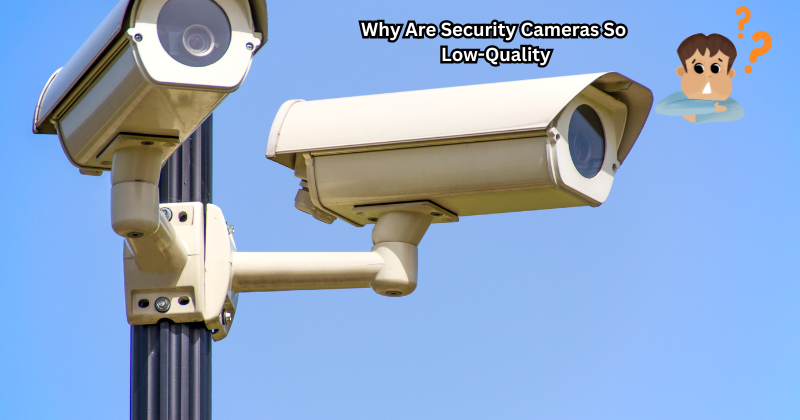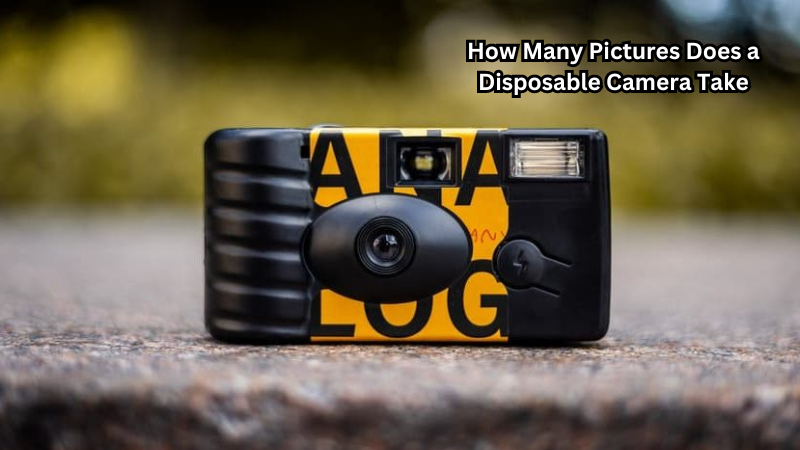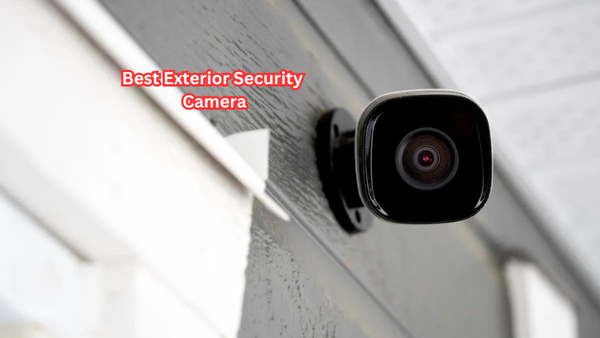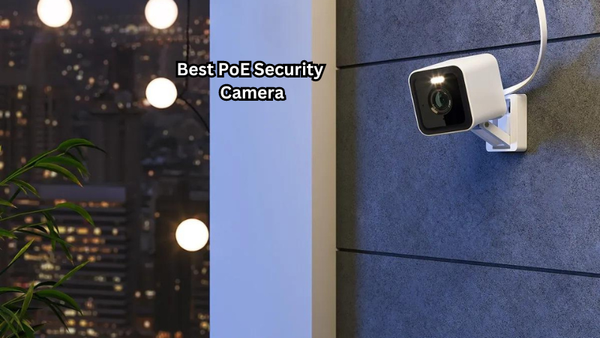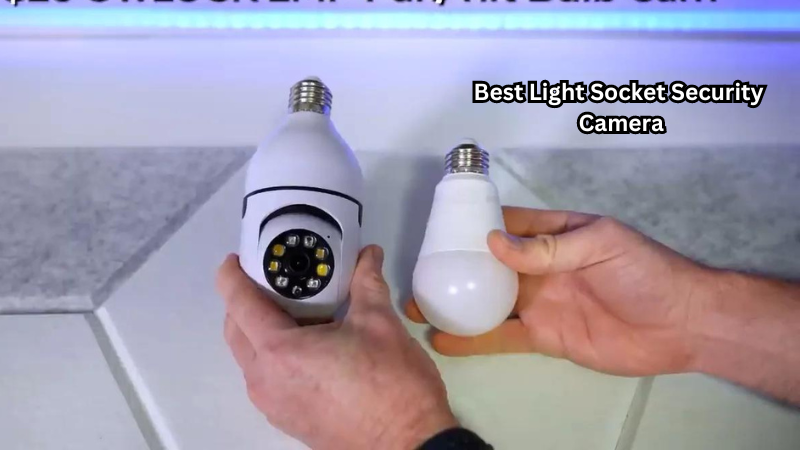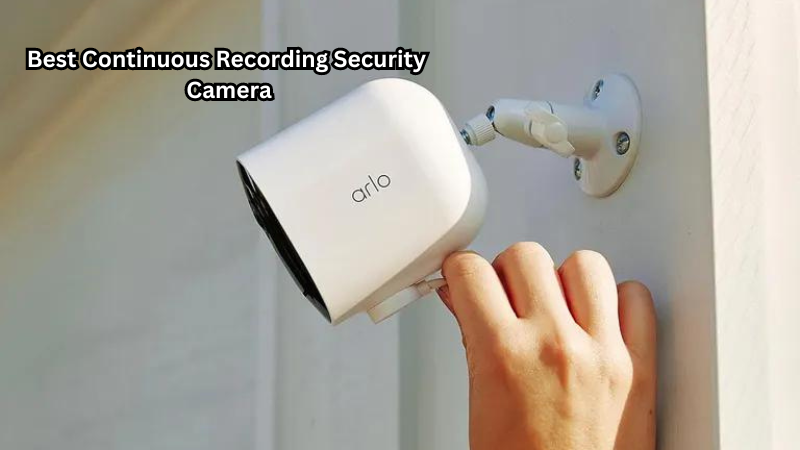The prevalence of low-quality security cameras in today's market raises concerns about the efficacy and reliability of surveillance systems. Several factors contribute to the subpar video quality observed in many security camera setups.
Issues such as outdated technology, cost-cutting measures by manufacturers, insufficient lighting conditions, improper installation, and limited bandwidth for data transmission can all impact the quality of footage captured. These factors not only compromise the clarity and detail of images but also hinder the effectiveness of surveillance efforts.
Understanding the reasons behind the prevalence of low-quality security cameras is crucial in making informed decisions for enhancing security measures and upgrading surveillance systems. In this article, we will delve into some of the main reasons for the low quality of security cameras and discuss potential solutions to address these issues.
Importance of High-Quality Security Cameras
Before diving into the reasons behind low-quality security cameras, let's first understand why having high-quality surveillance footage is essential.
In today's world, where crime rates are on the rise and threats to public safety are ever-present, effective surveillance systems play a crucial role in ensuring the safety and security of individuals, businesses, and communities.
High-quality security cameras provide clear and detailed footage that can aid in identifying suspects, gathering evidence, and preventing crimes. Clear footage can also help in monitoring and managing traffic flow, tracking employee activities, and detecting potential hazards or safety concerns.
Moreover, high-quality surveillance footage is crucial for investigations and legal proceedings. Grainy or blurry images captured by low-quality cameras may not hold up as evidence in court, potentially hindering the justice system.
Reasons for Why Are Security Cameras So Low Quality
Now, let's explore some of the main reasons for the poor quality of security cameras in today's market.
Outdated Technology
One of the main reasons behind low-quality security cameras is outdated technology. Many older security camera systems use analog cameras with lower resolution and limited capabilities compared to newer digital cameras. These outdated systems are often unable to capture high-definition footage or provide advanced features such as remote viewing and motion detection.
Low Resolution
Resolution refers to the number of pixels in an image, and it directly affects the clarity and detail of footage captured by a security camera. Many budget-friendly security cameras have lower resolutions, often ranging from 480p to 720p, resulting in grainy and pixelated images that make it challenging to identify individuals or objects.
High-quality video cameras usually have resolutions of 1080p or higher, providing much clearer and more detailed footage.
Cost-Cutting Measures
In today's competitive market, manufacturers often resort to cost-cutting measures in order to offer budget-friendly security cameras. This can lead to the use of cheaper components, lower-quality lenses, and less efficient processing capabilities, ultimately impacting the overall video quality.
CCTV cameras also tend to have lower-quality footage compared to IP cameras, as they use analog technology and compress the video for data transmission, resulting in a significant loss of image quality.
Improper Installation
Improper installation can also greatly impact the quality of security camera footage.
If a camera is not positioned correctly or is obstructed by objects, it may not capture the desired field of view or produce clear images. In addition, poor cable management or incorrect adjustments to camera settings can further degrade video quality.
Limited Bandwidth for Data Transmission
In order to transmit video footage over a network, security cameras require sufficient bandwidth.
However, many surveillance systems may have limited bandwidth due to factors such as outdated network infrastructure or sharing of bandwidth with other devices. This can result in choppy, delayed, or even lost footage.
Lens Quality and Lighting Conditions
The quality of a camera's lens greatly affects its ability to capture clear images. Low-quality lenses may introduce distortions, blurriness, or color shifts in the footage. Additionally, insufficient lighting conditions can impact the clarity of images captured by security cameras.
Sensor Size and Type
The size and type of camera sensor also play a significant role in the quality of footage. Smaller sensors, which are often used in budget-friendly security cameras, have limited capabilities compared to larger sensors found in higher-end cameras.
Most security cameras have digital zoom capabilities, but with a smaller sensor, this can result in a significant loss of image quality. Similarly, the type of sensor used can affect factors such as low-light performance, dynamic range, and color accuracy.
Factors and Solutions to Degrade the Performance of Low-Quality Cameras
The aforementioned reasons contribute to the low quality of security cameras, which can ultimately hinder their overall performance. However, there are several solutions available to address these issues and improve the performance of low-quality cameras.
Upgrading Technology
Upgrading to newer digital camera systems with higher resolutions, advanced features, and improved processing capabilities can greatly enhance video quality and overall performance.
Proper Installation and Maintenance
Proper installation, regular maintenance, and correct adjustments of camera settings can greatly improve the performance of security cameras. This includes ensuring proper positioning, cable management, and sufficient lighting for optimal video quality.
Bandwidth Management
Effective bandwidth management techniques such as network optimization or limiting the number of devices sharing bandwidth can help alleviate issues with data transmission.
Using High-Quality Lenses
Investing in high-quality lenses can greatly improve the performance of security cameras, resulting in clearer and more detailed footage.
Improving Sensor Capabilities
Choosing cameras with larger sensors and better sensor types can significantly enhance the overall quality of surveillance footage.
These solutions can help address the issues that contribute to low-quality security cameras, ultimately improving their performance and aiding in the delivery of justice through surveillance.
Tips for Choosing High-Quality Security Cameras
When shopping for security cameras, here are some tips to keep in mind to ensure you choose high-quality systems:
- Pay attention to the camera's resolution and aim for at least 1080p or higher.
- Consider the size and type of sensor used in the camera.
- Read reviews and do research on the brand and model before purchasing.
- Invest in high-quality lenses for better image quality.
- Consider the lighting conditions and choose cameras with features such as night vision or WDR (Wide Dynamic Range) to improve performance in low-light settings.
By considering these factors and investing in higher-quality security cameras, individuals and businesses can greatly enhance their surveillance capabilities and ensure clearer and more reliable footage for the safety and security of their premises.
What Makes High-Quality Security Cameras Worth the Investment
While high-quality security cameras may come at a higher cost, they offer several benefits that make them worth the investment.
Better Image Clarity and Detail
High-resolution cameras with advanced features can capture sharper and more detailed footage, making it easier to identify individuals and objects. This is especially crucial in investigations and legal proceedings.
Enhanced Surveillance Capabilities
Modern security cameras offer advanced features such as motion detection, remote viewing, and integration with other smart devices, allowing for more efficient and effective surveillance.
Longer Lifespan
Investing in high-quality cameras can also prolong their lifespan compared to budget-friendly options. This means less frequent replacements or repairs, ultimately saving time and money in the long run.
Overall Peace of Mind
With improved performance and capabilities, high-quality security cameras offer increased peace of mind for individuals and businesses, knowing that their premises are well-protected.
Versatile Storage Options
High-quality cameras often offer versatile storage options such as cloud storage or SD card options, providing convenient and secure ways to store footage. This can also save costs on additional hardware for storage purposes.
Storage space is also a crucial element to consider when selecting security cameras. IP security cameras, for example, provide the option to store high-quality footage on a network video recorder (NVR) or in the cloud. This allows for easy access and management of footage, even remotely.
These advanced features and benefits make high-quality security cameras a worthwhile investment for those looking to enhance their security measures.
FAQs
Why aren't security cameras HD?
Security cameras come in various resolutions, and while some may offer high-definition (HD) options, not all do. This can be due to factors such as budget constraints, technology limitations, or specific needs for the camera's purpose.
Is 4K better than 1080p for CCTV?
4K resolution offers four times the pixels of 1080p, resulting in sharper and more detailed footage. However, this also means larger file sizes and increased storage needs. Ultimately, the decision between 4K and 1080p will depend on individual needs and budget considerations.
Can security cameras see in the dark?
Some security cameras come with features such as night vision or infrared technology, allowing them to see in low light settings or complete darkness. However, the effectiveness of these features may vary depending on the camera's specifications and lighting conditions.
Can security cameras be hacked?
While any technology has the potential to be hacked, taking proper security measures, such as using strong passwords and regularly updating firmware, can greatly reduce the risk of security cameras being hacked.
Conclusion
In conclusion, the prevalence of low-quality security cameras stems from a combination of factors that compromise their performance and effectiveness in surveillance applications.
This compromised quality not only hinders the ability to identify and respond to security threats effectively but also undermines the overall purpose of surveillance systems.
Addressing these underlying issues through investing in modern, high-resolution cameras, ensuring proper installation and maintenance, optimizing lighting conditions, and prioritizing data bandwidth can significantly enhance the quality and reliability of security camera systems for robust surveillance solutions.
